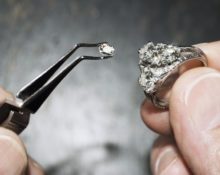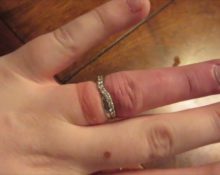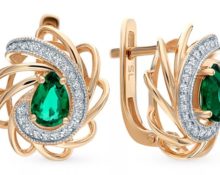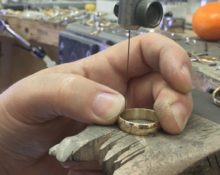A ring with a precious and semi-precious stone is the pride and joy of its owner. That is why the loss of a gem from the grooves can become a real tragedy. However, in fact, there are not many reasons for panic and frustration. Jewelry can almost always be returned, exchanged or repaired at the expense of the manufacturer or seller.
Warranty regulations
Key points:
 Manufacturers have the right to determine the warranty period themselves;
Manufacturers have the right to determine the warranty period themselves;- if the manufacturer did not indicate the terms of service under the warranty, but gave an expiration date in the description of the product, then you need to build on it;
- if no deadlines are specified at all, then the law is in force according to which the buyer is given 6 months to identify hidden defects;
- jewelry is included in the category of goods that cannot be returned or exchanged within a 14-day period due to the color and design not being liked or due to the wrong size;
- The only basis for returning or exchanging jewelry is its poor quality.
Important! It is necessary to distinguish between such concepts as “detection of a hidden defect” and “breakage”. In the first case, the finger jewelry remains intact; the owner simply finds out about the defect. In the second, there is precisely a malfunction. Understanding the nuances of the wording will be useful when asserting your rights. Thus, only six months are given to identify a hidden defect, but the warranty for a broken ring lasts 24 months.
Stone falling out due to a fastening defect or irregular shape is classified as a manufacturing defect.. In such a scenario, the store must meet the buyer halfway and return or exchange goods of inadequate quality. The service can be refused only if there is no receipt, label or any other evidence that the purchase was made in a specific store.
Important! If the payment was made by non-cash method, then to confirm its completion it is enough to familiarize yourself with the payment history.
If the stone falls out due to the actions of the buyer or the product has lost its presentation by the time the store goes to the store for warranty service, such jewelry will not be accepted.
Reasons for “losing” a stone from a ring
The mineral may fall out due to:
 loosening or breaking of the bow;
loosening or breaking of the bow;- irregular shape (cut or the mineral itself);
- mechanical destruction of stone;
- improper use (the ring must be removed when washing dishes, visiting the pool and sauna);
- improper storage (a box with a soft bottom should be allocated for the accessory).
Important! Rings strung on the frame (pin), rather than inserted minerals, often fall out due to an inaccurately determined hole size and poor-quality glue.
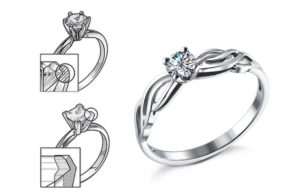 A lot depends on exactly how and why the loss occurred.. If this happened due to the fault of the manufacturer, that is, we are talking about a manufacturing defect, then the buyer has the right to count on free assistance, exchange or return. Moreover the type of assistance provided depends on the context of the situation. A lost stone in a workshop can be replaced immediately only if the gem is available. If it is missing, you will have to return the jewelry and wait a while.
A lot depends on exactly how and why the loss occurred.. If this happened due to the fault of the manufacturer, that is, we are talking about a manufacturing defect, then the buyer has the right to count on free assistance, exchange or return. Moreover the type of assistance provided depends on the context of the situation. A lost stone in a workshop can be replaced immediately only if the gem is available. If it is missing, you will have to return the jewelry and wait a while.
If the stone has not been lost, then you need to bring it with you. The expert will assess the complexity of the restoration work and indicate the approximate duration of the repair. On average, the process takes 1–3 days, but in some cases you will have to wait much longer.
In situations where the reason for what is happening lies in the careless handling of the owner, there is no point in contacting the store. He will not undertake any obligations or provide any services.
Often the lines between the two causes of failure are blurred. This is why independent examinations are so often carried out. With its help, the real root of trouble is established.
Important! Many manufacturers and stores refuse to do anything until an examination is carried out. Therefore, you need to be prepared for the fact that resolving the problem will take a lot of time. Moreover, the service is provided for a fee, and if the result is not in favor of the buyer, then no one will reimburse him for the costs of conducting the examination.
In what cases can you insert the stone yourself?
Such a step should be taken only if you have certain skills and assets required in the jewelry business. Without this, it will be impossible to either restore or recreate the rivet.
How to install the stone in place?
The easiest way to do this is with a gem strung on a pin. It will be enough to wipe the frame with alcohol, apply a specialized adhesive composition to it and place the stone in place. In the case of frames, the process will require much more effort. You will need to melt the clamp foot and secure it.
When is this not recommended?
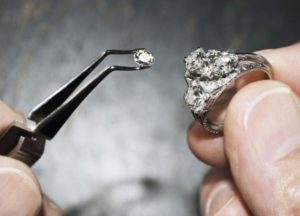 Work with expensive jewelry should be entrusted to specialists. Even reading the detailed instructions and following all the rules is not a guarantee that the repair procedure will be carried out correctly. and there will be no noticeable marks left. In addition, there is no need to install the stone yourself as long as there is a valid warranty.
Work with expensive jewelry should be entrusted to specialists. Even reading the detailed instructions and following all the rules is not a guarantee that the repair procedure will be carried out correctly. and there will be no noticeable marks left. In addition, there is no need to install the stone yourself as long as there is a valid warranty.
There is always a way to force the store or craftsman to eliminate the shortcomings made at the stage of creating jewelry. Usually, to do this, it is enough to write a statement with reference to the law protecting consumer rights and attach the opinion of an independent expert to the paper.


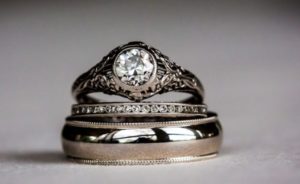 Manufacturers have the right to determine the warranty period themselves;
Manufacturers have the right to determine the warranty period themselves;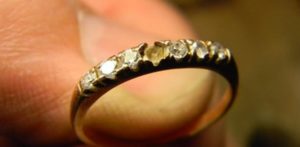 loosening or breaking of the bow;
loosening or breaking of the bow; 0
0